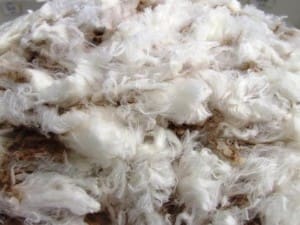 AUSTRALIAN wool production is expected to stabilise at 340 million kilograms in 2017-18 due to a slight increase in sheep shorn and despite an expected dip in fleece weights.
AUSTRALIAN wool production is expected to stabilise at 340 million kilograms in 2017-18 due to a slight increase in sheep shorn and despite an expected dip in fleece weights.
The Australian Wool Production Forecasting Committee has predicted that 2017-18 Australian shorn wool production will stay the same as its final estimate for production in 2016/17. 340mkg greasy.
The run of high Merino wool prices and strong lamb price levels also appear to be encouraging producers to retain sheep despite high mutton prices, the committee said.
The committee’s estimate of shorn wool production in 2016/17 of 340mkg greasy, is up by 4.7 percent on the 90-year low recorded in 2015-16.
The increase is due mainly to higher wool cuts per head after the excellent seasonal conditions across Australia for some or all of the 2016-17 wool growing season.
Shorn sheep number impacted by premature shearing
AWPFC chairman Russell Pattinson said after the excellent seasonal conditions experienced across Australia for some or all of 2016-17, conditions have become more mixed.
“Seasonal conditions in some regions including much of Victoria and the south-east of South Australia, are reported to be very good, but other areas, including parts of Western Australia, the Western Division of New South Wales and key wool growing regions in Queensland, have been dry he said.
While fleece weights in Spring are likely to be good, there is likely to be a moderation in the average wool cuts per head in some areas as the season progresses. Overall, the season average wool cut per head is expected to slide by 1.2pc. This contrasts with the 3.4pc increase in average cut per head estimated for 2016-17, Mr Pattinson said.
“This easing in average wool cut per head is likely to be almost entirely offset by a 1pc increase in the number of sheep shorn during the 2017-18 season.
“This increase in the number of sheep shorn reflects a willingness of producers to shear sheep and lambs prior to sale or retain sheep in response to the run of high Merino wool prices.”
Mr Pattinson said the expected increase in shorn sheep also reflected to some extent a rise in the number of prematurely-shorn sheep.
The committee’s 340mkg greasy shorn wool estimate for 2016-17 and 2017-18 was 4.7pc on the 90-year low of 325mkg recorded in 2015/16 and slightly higher than its fourth forecast in April.
The forecast represented a little less than the 5.3pc increase in the weight of wool tested by AWTA in 2016-17. This difference reflects the reported release of on-farm stocks during the season, notably of superfine wool, in response to the sustained rise in Merino wool prices in 2016-17, the committee said.
More wool being offered at auction
The committee’s 2016-17 estimate also compared with the 3.1pc increase in first-hand wool offered at auction in 2016-17 reported by AWEX and the 6.2pc increase in wool receivals reported by the Australian Bureau of Statistics for the financial year.
The committee noted that AWTA test data showed a significant increase in the weight of wool tested between 20 and 24 microns, an increase in the weight of 19 micron wool tested and declines in the volumes of 18.5 micron and finer wool. This in the main reflects the excellent seasonal conditions, it said.
There was also a fall in the volume of 26 to 28 micron wool, but an increase in 30.6 and broader wool. As a result of these changes, the mean fibre diameter for Australia in 2016-17 was steady at 21 microns, the same as in 2015-16.
Source: AWI.

HAVE YOUR SAY